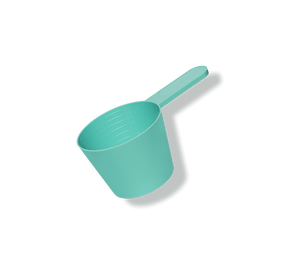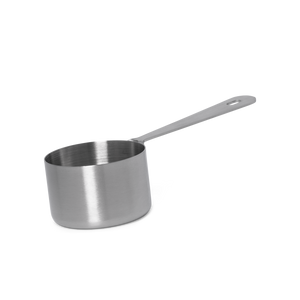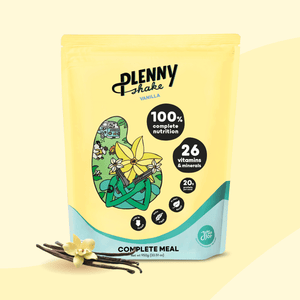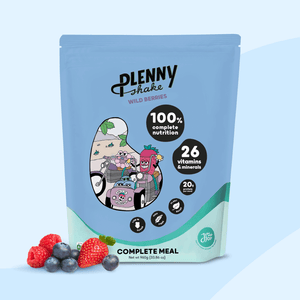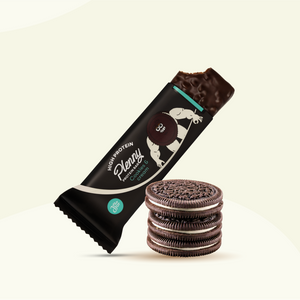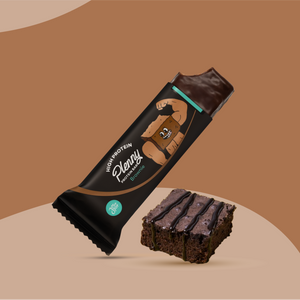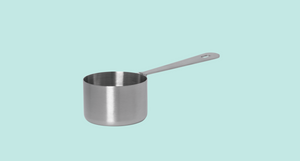Have you ever noticed that, somehow somewhere along the way, life basically became a sequence of routines? You wake up, shower, get dressed, prepare a Plenny Shake for breakfast (and maybe one for lunch), brush your teeth, get to work, finish work, prepare dinner, Netflix, bed, wake up…
Sound familiar?
Even if your habits look completely different, your life is not much more than the sum of those habits (sorry for the reality check). Think about it: your habits play an enormous role in your physical fitness, your relationships, your career, your money, etc. With that in mind, good habits can be a very powerful tool to improve your daily life, while bad habits can be a threat to your all-round happiness.
We fill our days with countless little habits, which we’ve grown into over the course of our lives. No matter how old you are, you’ve been doing the same things basically forever. It’s not surprising then, that adopting a new habit can be pretty tricky - especially making it stick. But chances are you’ve been going about it wrong: behavioural scientists have found that a great number of people actually try to form new habits the wrong way (9). Perhaps there is no right or wrong way to adopt a new habit, but if there is one approach we can trust it’s the scientific approach, right?
So before we start setting ambitious goals, let’s first look at how habits actually work - just so we know what we’re up against.

The Habit Loop
Here’s something interesting: the brilliant researchers at Duke University have found that more than 40 percent of people’s daily actions aren’t actually conscious decisions, but habits (1). This means that half the time, you’re basically not thinking, but simply doing. Your actions have become automated, and simply follow a neurological loop in your brain. According to researchers at MIT (2) - backed by New York Times Bestseller-author James Clear (3), and Stanford behaviour al researcher Dr. BJ Fogg (4) - this neurological loop consists of three elements:

The Cue
The cue of the habit is that which triggers it and sets the routine in motion. They come in a wide variety, but common cues are: time, location, preceding events, emotional state, and other people. If this still seems a little abstract, author James Clear gives some clear examples (5):
Time: Waking up and getting dressed, making coffee etc.
Location: Being in the kitchen with a plate of cookies and eating the cookies, just because they’re there.
Preceding events: A notification on your phone, so you pick it up to check what’s new.
Emotional state: Feeling stressed, and - again - picking up your phone to see what’s new.
Other people: The example Clear gives here is pretty interesting. We’re probably all familiar with behavioural changes around certain people; our parents, high school friends etc. But a study published in the New England Journal of Medicine found that proximity isn’t even that important. If your friend, who lives hundreds of kilometers/miles away, becomes obese, then your chance of also becoming obese increases by 57 percent! (6)
The Routine
The routine is perhaps more straightforward to understand than the cues - it’s the behaviour following the cue or trigger. For example: The cue is stress, the routine is picking up your phone and scrolling through your timeline. FYI, this is an example of a bad habit.

The Reward
The reward is the reason why you’ve created these neurological loops in the first place. It’s the positive reinforcement that’s connected to the behaviour , making it more likely you’ll repeat the behaviour . Sticking to the stress/phone example, according to Harvard researcher Trevor Haynes, checking your social media notifications releases dopamine, a chemical associated with food, exercise, love, sex, gambling, and drugs. So it makes you feel good and it’s addictive, making sure you’ll be likely to repeat the behaviour (7).
Now that we know how the three elements of behaviour work, the next step is to ‘hack' them and manipulate them to our advantage. Let’s look at each of three elements and discuss the scientifically proven ways to manipulate them.

1. Cue
Every habit begins with the cue. Again, it’s the trigger that puts the wheels of the routine in motion.
So how do you develop a new cue? One scientifically proven way to create a new cue is to link it to a cue you’ve already internalized. This approach is commonly referred to as ‘habit stacking’, a powerful technique used by both Dr. Fogg and James Clear (3,4).
For example:
After brushing my teeth I will do a breathing exercise
Before I drink my morning coffee I will do 10 lunges
Before I go to the gym I will have a Plenny Drink
If you’re into podcasts at all, try the Armchair Expert episode with Dr. BJ Fogg. He talks about his own experience forming a new habit of doing daily push ups. He started by doing two push-ups every time he went to the bathroom, and is now in the habit of doing 40 to 80 push-ups per day. And the dude is almost 60!
Try to think which current habits you have and which one would serve best as a habit to stack on. That’s your cue!
2. Routine
The trick to creating a new habit is to start small. Don’t set yourself up to fail by setting impossible goals, because you will fail. It’s nothing personal; studies say about 92% of people fail at achieving their New Year's resolutions each year (8). It’s a numbers game, and the game is rigged.
Not to say you shouldn’t be ambitious, but if you plan to work out/write/read/meditate for two hours everyday (while currently doing zero hours), your motivation is likely to fizzle out pretty quickly. Again, the example of Dr. Fogg is a great one as it perfectly demonstrates the power of starting small. Two push ups each time you go to the bathroom. Anyone physically able to do push ups can do that! Maybe even start with one push up - don’t ask too much of yourself too quickly. If you want to read more, pick up your book everyday and just keep it in your hands. Hard to fail at that. Once you’ve mastered that skill, try reading a sentence or two. You get the point.
Research shows that it takes about 18 to 254 days to form a habit, with a median time of 66 days. You’ll have to muster some patience and discipline, but after that the Habit Loop kicks in and it’s basically an automated process!
3. Reward
Say you picked up your book 5 days in a row - cause for celebration! Yes, seriously. It might seem silly to celebrate a relatively small feat, but you made a promise to yourself and kept it. Look at it like this: you’re not celebrating so much being able to pick up a book, you’re celebrating the fact that you’ve changed your behaviour , which is a pretty big deal. You’ve taken steps to improve yourself, you have succeeded, and now you’re taking a moment to acknowledge this fact with a small celebration or reward. This positive reinforcement will help to solidify the habit.
These are some examples from Dr. Fogg’s New York Times Best-Seller book Tiny Habits, that you can try to celebrate completing your habit (4):
- Do a physical movement — Thumbs up, fist pump or clap your hands.
- Do a flowing physical movement — A short victory dance or applaud.
- Say something out loud or inside, to yourself — ”Awesome!”, ”Bingo!” or ”Good job!”
- Sing a song out loud or inside, to yourself — ”Hey now, you’re a rock star”
- Vocalise music or a sound effect — ”Do do do doooo!” (trumpet for royalty)
- Imagine hearing music or sound effects — A roaring crowd, happy for your success.
- Move your face to look happy — Smile or laugh.
These examples may seem a little silly, and to some extent they are. But it doesn’t really matter what you do, as long as it makes you happy and reinforces your behaviour in a positive way. Go ahead and think of some of your own, if these make you cringe a bit. For example:
Eat a tasty and nutritious snack - treat yourself to a Plenny Bar!
How Jimmy Joy can help you to create new habits
A habit you might want to develop is to take better care of yourself. For example, by making sure you eat healthy and regularly. Or perhaps you want to help reduce carbon emissions by eating less or no more meat. And guess what? These might be the easiest new habits you’ll create all year - maybe even in your whole life! Because we’ve already developed the perfect formula for optimal daily nutrition with our Plenny Shake, Plenny Drink, Plenny Bar, and Plenny Pot. And they’re vegan, too!
But that’s not all: we can deliver your new daily habit straight to your front door every month with our subscription service. Subscribing will even save you 15%!
BONUS TIPS
Make it easy/eliminate objects
The best way to make sure your new habits stick is to make it as easy as possible to do them by eliminating any objects that might prevent you from doing so.
Wendy Wood, a research psychologist at the University of Southern California, started sleeping in her running outfit, so all she had to do in the morning was put on running shoes and step outside (9).
If you want to catch up on your reading, place your book somewhere in sight - preferably near a comfortable chair for you to sit in. If you want to watch less TV, hide the remote control in your kitchen drawer. Or maybe even store the TV in the garage for a couple of days. This approach is scientifically backed up by Professor of Psychology Mihaly Csikszentmihalyi, who discusses it in-depth in his book Finding Flow (10).
And then, Celebrate some more!
Let’s say you’ve completed your habit for seven days in a row. First of all, congratulations - that’s pretty amazing. Well done, you. Now treat yourself! You’ve dangled a carrot in front of your face for a week (or maybe even a month) and now you’ve earned it. If you allow yourself something you love after achieving your goal - a cheat meal, a cocktail, a massage, or a trip to the movies - you can focus on that prize if one day you cannot seem to muster the motivation to stick to your new habit. So you can have your cake and eat it too, but only if you’ve earned it!
SOURCES
- Duke University, Association for Psychological Science 2006, David T. Neal, Wendy Wood, and Jeffrey M. Quinn, Habits—A Repeat Performance. Available at: http://web.archive.org/web/20110526144503/http://dornsife.usc.edu/wendywood/research/documents/Neal.Wood.Quinn.2006.pdf.
- Cathryn M. Delude, N. (2005) Brain researchers explain why old habits die hard, MIT News | Massachusetts Institute of Technology. Available at: https://news.mit.edu/2005/habit
- Atomic Habits: An Easy & Proven Way to Build Good Habits & Break Bad Ones (2018), by James Clear, published by Penguin / Random House.
- Tiny Habits: The Small Changes That Change Everything (2019), by BJ Fogg, published by Houghton Mifflin Harcourt.
- The Habit Loop: 5 Habit Triggers That Make New behavior s Stick (2015). Available at: https://jamesclear.com/habit-triggers#:~:text=Cue%201%3A%20Time&text=Common%20morning%20habits%20are%20just,that%20time%20triggers%20our%20behavior (Accessed: 21 December 2020).
-
Christakis, N. and Fowler, J. (2007) "The Spread of Obesity in a Large Social Network over 32 Years", New England Journal of Medicine, 357(4), pp. 370-379. doi: 10.1056/nejmsa066082.
- Dopamine, Smartphones & You: A battle for your time - Science in the News (2018). Available at: http://sitn.hms.harvard.edu/flash/2018/dopamine-smartphones-battle-time/
- A Ridiculous Amount of People Have Already Ditched Their New Year’s Resolutions (2018). Available at: https://www.thedailymeal.com/healthy-eating/new-years-resolutions-abandoned#:~:text=Based%20on%20data%20collected%20by,will%20have%20ditched%20their%20goals.
- How to Build Healthy Habits (2020). Available at: https://www.nytimes.com/2020/02/18/well/mind/how-to-build-healthy-habits.html
- Finding Flow: The Psychology Of Engagement With Everyday Life, by Mihaly Csikszentmihalyi, Published by Ingram Publisher Services US in 1998.
-
Lally, P. et al. (2009) "How are habits formed: Modelling habit formation in the real world", European Journal of Social Psychology, 40(6), pp. 998-1009. doi: 10.1002/ejsp.674.
- How Habits Work - Charles Duhigg (2020). Available at: https://charlesduhigg.com/how-habits-work/

 Everything You Need In One Meal
Everything You Need In One Meal
 Stay Full For 3-5 Hours
Stay Full For 3-5 Hours

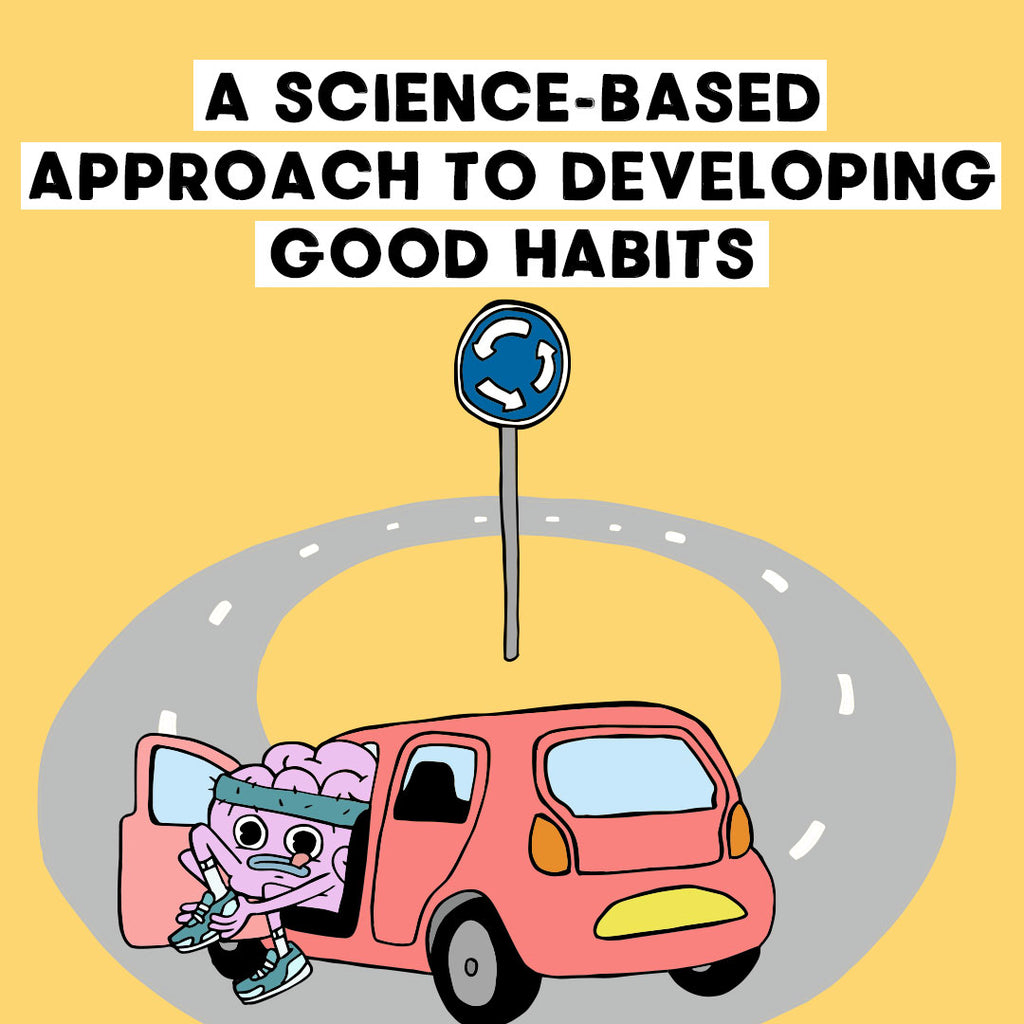



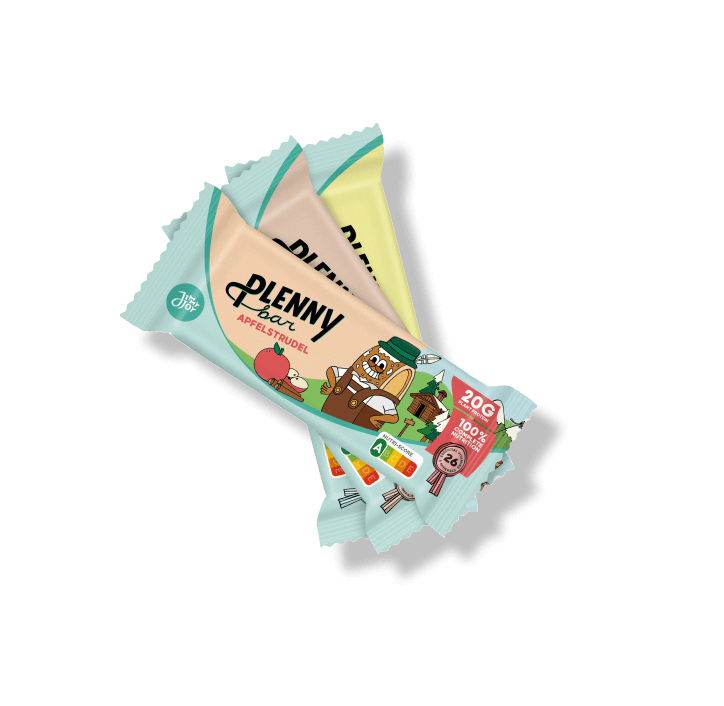



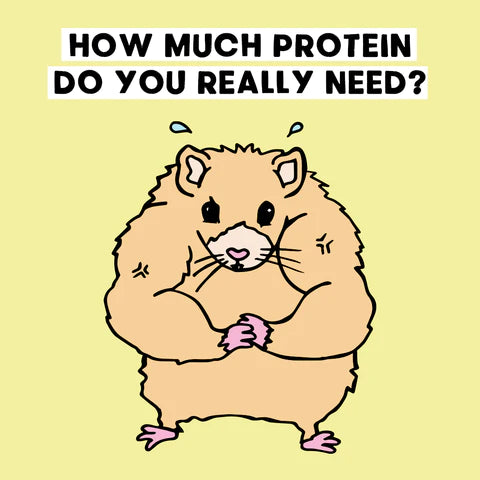


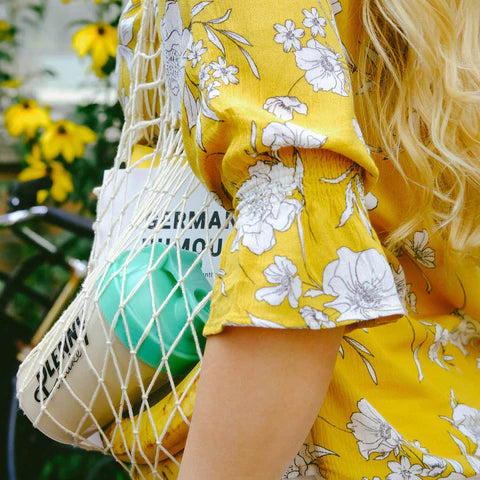








 Product added to cart
Product added to cart







